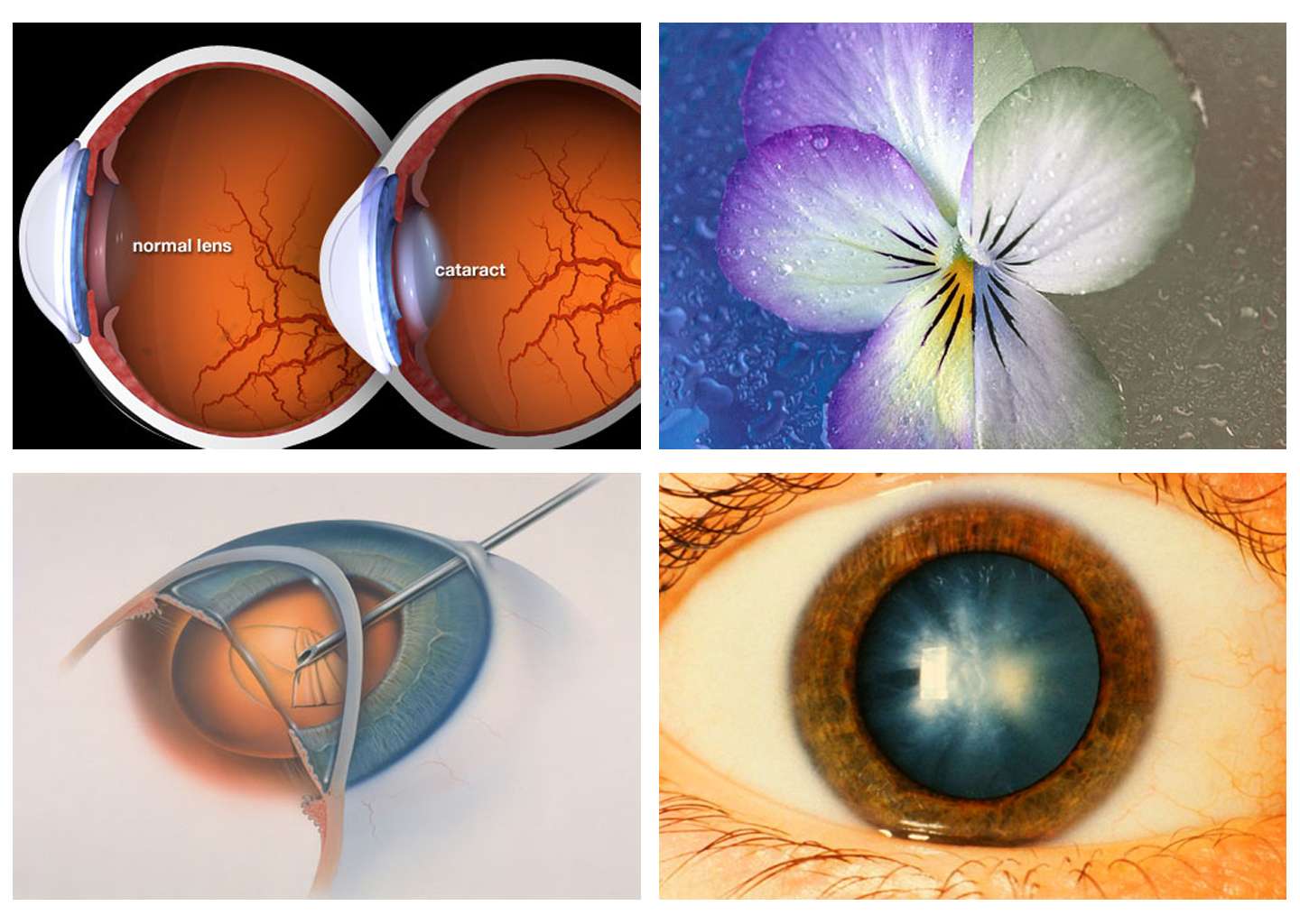
What Causes Cataracts?
The lens inside the eye works much like a camera lens, focusing light onto the retina for clear vision. It also adjusts the eye’s focus, letting us see things clearly both up close and far away. The lens is mostly made of water and protein. The protein is arranged in a precise way that keeps the lens clear and lets light pass through it.
But as we age, some of the protein may clump together and start to cloud a small area of the lens. This is a cataract, and over time, it may grow larger and cloud more of the lens, making it harder to see.
Cataract Treatment
When symptoms begin to appear, you may be able to improve your vision for a while using new glasses, strong bifocals, magnification, appropriate lighting or other visual aids.
Think about surgery when your cataracts have progressed enough to seriously impair your vision and affect your daily life. Many people consider poor vision an inevitable fact of aging, but cataract surgery is a simple, relatively painless procedure to regain vision.
Cataract surgery is very successful in restoring vision. In fact, it is the most frequently performed surgery in the United States, with more than 3 million Americans undergoing cataract surgery each year, according to PBA.
Nine out of 10 people who have cataract surgery regain very good vision, somewhere between 20/20 and 20/40.
At vision eye center, all surgeries are performed using the latest PHACOEMULSIFICATION technology with foldable, FDA approved lenses.
Machine: SOVEREIGN by Advance Medical Optics(AMO) from USA.
Technique: White star Technology software for cold phacoemulsification.
Our Operation Theater is designed in conformance with international standards for achieving highest standards of sterility and asepsis.
Ours is a dedicated operation theater for eye operations only. No other operations are performed here there by reducing the chance of infection.
Implants
The vision after cataract surgery depends on the kind and quality of implant.
Eyeglasses After Cataract Surgery
Unless you choose presbyopia-correcting IOLs, it’s likely you will need reading glasses after cataract surgery to see near objects clearly. Even people who choose these premium IOLs often find reading glasses are helpful for certain near tasks and seeing very small print.
In the event you have some mild refractive errors present after surgery (this is common), you may want to wear eyeglasses with progressive lenses full-time after your surgery to attain the best possible vision at all distances.
Even people who have an excellent visual outcome and can see well without glasses after cataract surgery often choose to wear eyeglasses full-time after their procedure to protect their eyes and because they feel more like themselves wearing eyeglasses after surgery if they have worn glasses most of their life.
If you choose to wear glasses after cataract surgery, lenses with anti-reflective coating and photochromic lenses are highly recommended for the best vision, comfort and appearance. Ask your eye care professional for details and to demonstrate these lenses.

